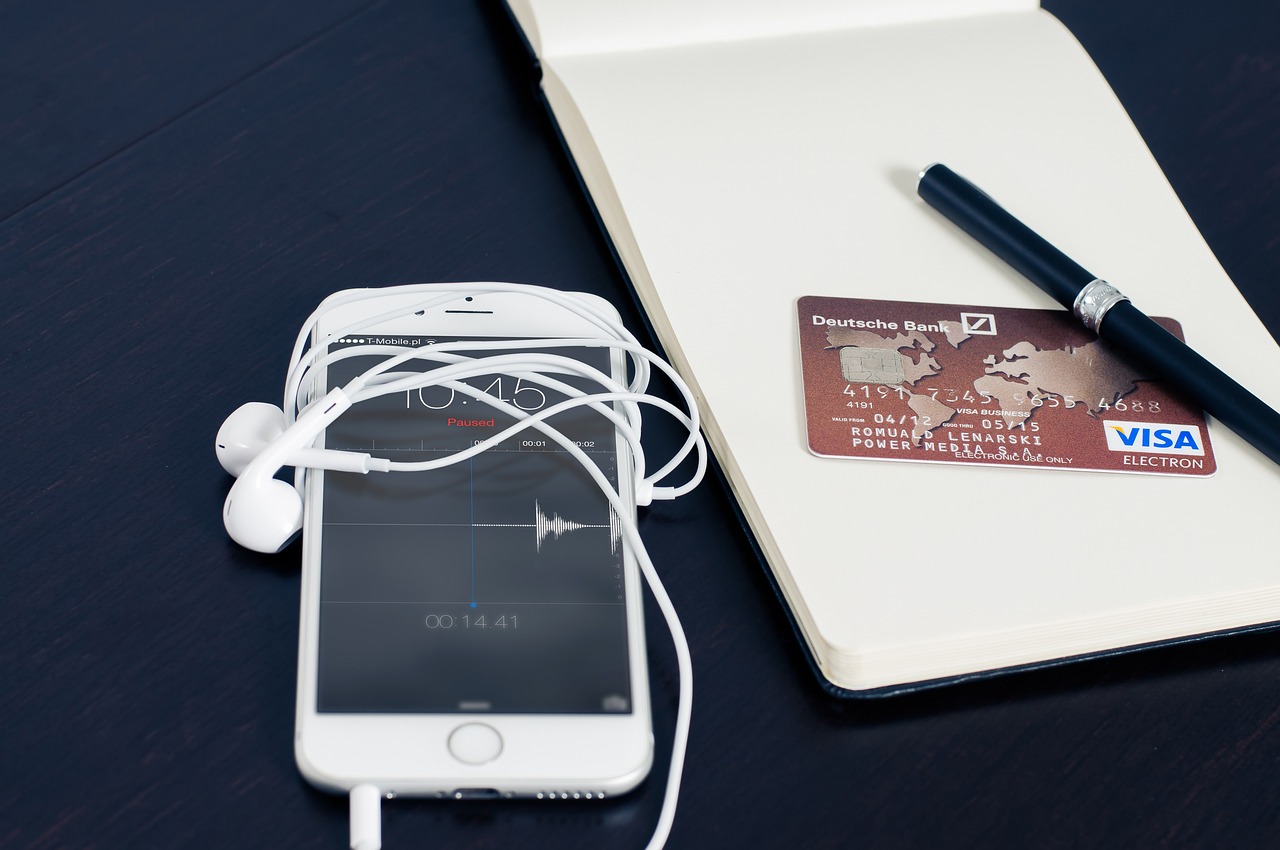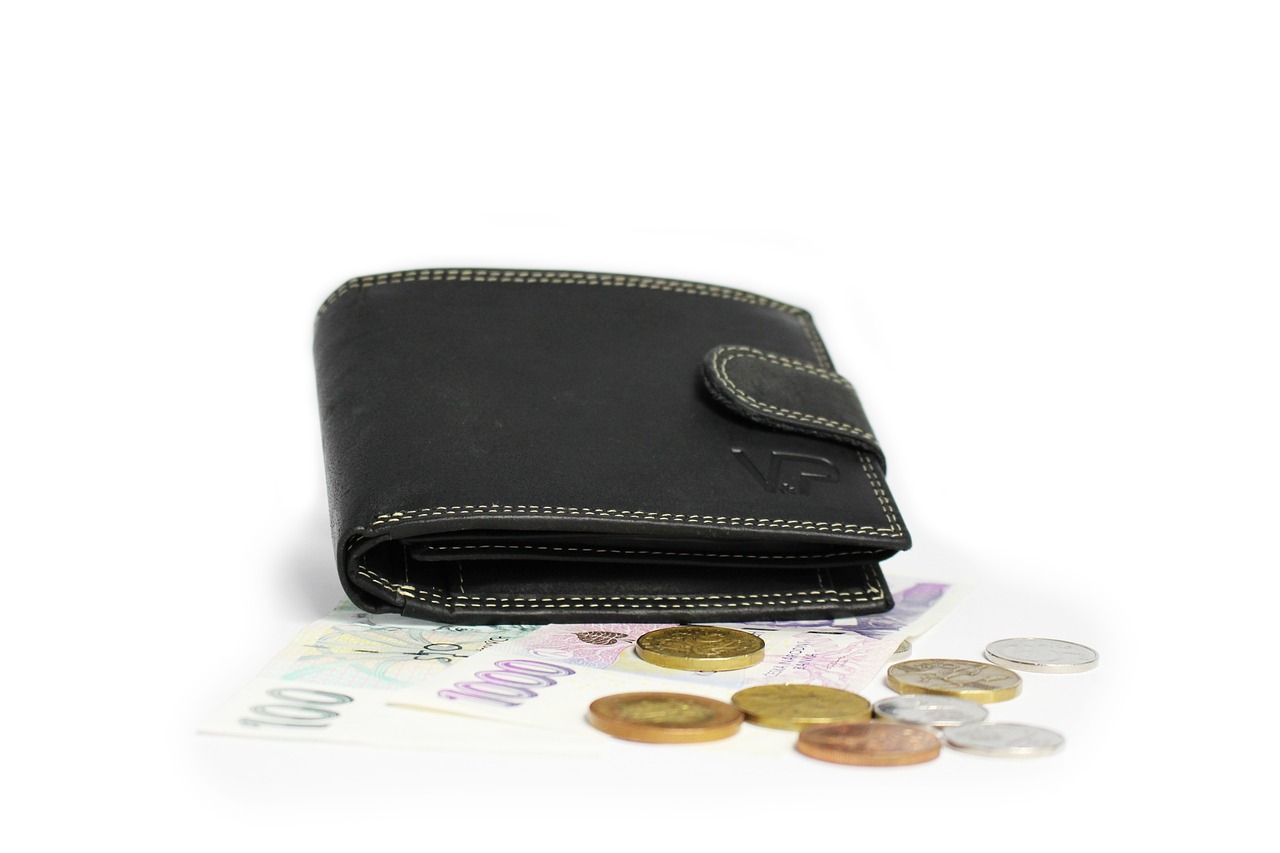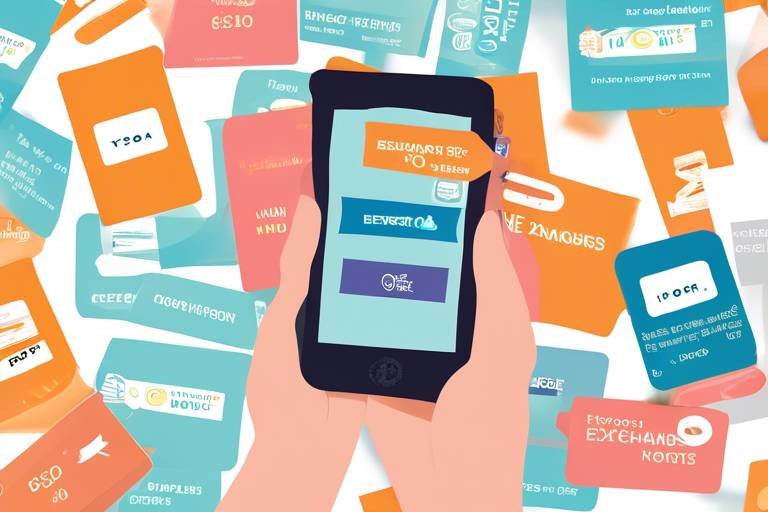The Importance of Interoperability in Wallet Development
In today's fast-paced digital world, the way we manage our finances is evolving at an unprecedented rate. One of the most crucial developments in this arena is the rise of digital wallets. But what makes a digital wallet truly effective? The answer lies in interoperability. Interoperability is not just a tech buzzword; it's the backbone of a seamless user experience in wallet development. Imagine trying to communicate with someone who speaks a different language; that’s how it feels when digital wallets lack interoperability. Users are left frustrated, unable to transact efficiently across various platforms. In this article, we will explore the critical role interoperability plays in enhancing user experience, security, and the overall efficiency of financial transactions across multiple ecosystems.
At its core, interoperability refers to the ability of different systems and platforms to work together seamlessly. In the context of digital wallets, this means that users can easily send, receive, and manage their funds across various applications and platforms without facing roadblocks. Imagine a world where you can effortlessly transfer money from your digital wallet to a friend's account, regardless of the platform they use. This is not just a luxury; it's becoming a necessity in a world where digital transactions are the norm. By enabling different wallets to communicate with each other, we can enhance user interactions and create a more cohesive financial ecosystem.
Interoperable wallets offer numerous advantages that can significantly enhance user experience and foster broader adoption. Here are some key benefits:
- Increased Accessibility: Users can access their funds from various platforms, making it easier to manage their finances.
- Improved User Experience: Seamless transactions mean users spend less time navigating complex processes and more time enjoying the benefits of digital wallets.
- Enhanced Security: Interoperable wallets can implement robust security measures that protect sensitive information across platforms.
These benefits not only improve user satisfaction but also build trust in digital wallets, encouraging more people to adopt this technology.
One of the standout features of interoperable wallets is their ability to simplify transactions across various platforms. Think of it as a universal remote for your finances—no more juggling multiple apps or accounts. When users can easily access their wallets and make transactions without hassle, it significantly boosts customer satisfaction. Imagine being able to pay for your coffee using your favorite app, and then effortlessly transferring some of that money to a friend who uses a different service. This seamless integration encourages more frequent usage and makes digital wallets a go-to option for everyday transactions.
Cross-platform compatibility is another vital aspect of interoperability. Users want to access their wallets from different devices and services without any hiccups. Whether you’re using a smartphone, tablet, or computer, the ability to manage your digital wallet across various platforms enhances convenience and usability. It’s akin to having a single key that opens multiple locks; it simplifies life and makes managing finances less of a chore.
In the world of digital payments, time is money. Streamlined transactions reduce friction during payments, allowing users to complete their purchases quickly and efficiently. Interoperability facilitates quicker transactions across various ecosystems, which is crucial in today's fast-paced environment. Imagine going through a checkout line and having to wait because the payment system isn’t compatible with your wallet. Frustrating, right? Interoperable wallets eliminate this issue, making transactions smoother and more efficient.
When it comes to digital wallets, security is paramount. Users need to feel confident that their sensitive information is protected. Interoperability can enhance security protocols by allowing wallets to implement advanced security measures that work across platforms. For instance, if one wallet develops a new security feature, interoperability allows that feature to be adopted by other wallets, providing a blanket of protection for all users. This collaborative approach to security fosters trust and encourages more people to utilize digital wallets.
Despite its numerous benefits, achieving interoperability poses several challenges. Technical limitations and the need for standardization across platforms can hinder the development of interoperable wallets. For instance, different wallets may use varying technologies, making it difficult to create a seamless experience. Moreover, regulatory barriers can complicate matters further. However, understanding these challenges is the first step towards finding solutions.
Technical and regulatory barriers present significant hurdles in the quest for interoperability. Different platforms may utilize unique technologies and protocols, making it challenging to establish a common ground. Additionally, regulatory requirements can vary from one jurisdiction to another, complicating the integration process. However, ongoing discussions among industry stakeholders are paving the way for potential solutions that can bridge these gaps.
Standardization is crucial for achieving interoperability. Ongoing efforts to establish common protocols and frameworks are essential for facilitating seamless wallet integration. By creating a set of universally accepted standards, developers can ensure that their wallets work harmoniously with others, leading to a more integrated financial ecosystem. This collaborative approach can ultimately drive broader adoption of digital wallets.
The future of wallet interoperability looks promising, with advancements in technology and increasing collaboration among developers. As more companies recognize the importance of interoperability, we can expect to see innovative solutions that enhance user experience and security. The rise of decentralized finance (DeFi) platforms, for instance, is likely to drive further integration among digital wallets. Imagine a future where your digital wallet can interact with various DeFi applications, allowing for seamless transactions and investments—all from one convenient interface.
Q: What is interoperability in digital wallets?
A: Interoperability refers to the ability of different digital wallet systems to communicate and work together seamlessly, allowing users to manage their funds across various platforms.
Q: Why is interoperability important?
A: Interoperability enhances user experience by simplifying transactions, increasing accessibility, and improving security, which fosters greater trust and adoption of digital wallets.
Q: What challenges exist in achieving interoperability?
A: Challenges include technical limitations, regulatory barriers, and the need for standardization across different platforms.
Q: What does the future hold for wallet interoperability?
A: The future looks promising, with advancements in technology and increased collaboration among developers likely to drive further integration and innovative solutions in the digital wallet space.

Understanding Interoperability
When we talk about interoperability, we’re diving into a world where different systems, platforms, and technologies can communicate and work together effortlessly. Imagine trying to send a text message from your smartphone to a friend's tablet, but the two devices speak different languages. Frustrating, right? Well, that's the essence of what interoperability aims to resolve in the realm of digital wallets.
In the context of wallet development, interoperability is crucial. It allows users to manage their finances across various platforms without the hassle of switching between different applications or services. Think of it as a universal remote control for your financial transactions—one tool that lets you access multiple services seamlessly. This capability not only enhances user experience but also fosters a sense of trust and reliability among users.
To put it simply, interoperability in digital wallets means:
- Seamless Transactions: Users can send money, make purchases, or receive funds without worrying about whether their wallet is compatible with the recipient's platform.
- Broader Accessibility: Users can access their wallets from various devices, whether it's a smartphone, tablet, or computer, making it easier to manage their finances on the go.
- Enhanced User Trust: When users know they can use their wallets anywhere, it builds confidence in the technology, encouraging wider adoption.
Moreover, interoperability plays a significant role in the security aspect of digital wallets. By allowing different systems to work together, developers can implement better security protocols that protect users' sensitive information across various platforms. This means that if one wallet has a strong security feature, it can be shared across others, creating a more robust defense against fraud and cyber threats.
In summary, interoperability is not just a fancy tech term; it’s the backbone of a user-friendly, secure, and efficient digital wallet ecosystem. It’s about creating a fluid financial experience that empowers users to engage with their money as they see fit, without the constraints of platform limitations. As we continue to explore the world of digital wallets, understanding this concept will be essential for both developers and users alike.

Benefits of Interoperable Wallets
Interoperable wallets are not just a trend; they are a necessity in today's digital financial landscape. Imagine a world where your wallet can seamlessly interact with various platforms, enabling you to transact without the hassle of switching between different apps or services. This level of accessibility is one of the primary benefits of interoperable wallets. Users can easily manage their funds across multiple platforms, making financial transactions smoother and more efficient. The convenience of having everything in one place cannot be overstated; it’s like having a universal remote for your financial life!
Furthermore, interoperable wallets significantly improve the user experience. Think about it: when you have to juggle multiple wallets for different currencies or platforms, it can feel overwhelming. Interoperable wallets eliminate this confusion by allowing users to conduct transactions across various ecosystems with ease. This seamless integration not only enhances customer satisfaction but also encourages more frequent use of digital wallets. When users find it easy to navigate their financial activities, they are more likely to trust and adopt these technologies.
Another crucial advantage is enhanced security. In an era where data breaches are all too common, users are understandably concerned about the safety of their financial information. Interoperable wallets can employ advanced security protocols that protect sensitive data while allowing for fluid transactions. For example, by utilizing standardized encryption methods across platforms, these wallets can ensure that user information remains secure, no matter where or how it’s accessed. This increased security fosters trust among users, making them more comfortable with digital transactions.
To sum it up, the benefits of interoperable wallets are profound. They not only enhance accessibility and user experience but also bolster security. As we continue to navigate the digital financial landscape, the demand for these interoperable solutions will only grow. It’s clear that the future of financial transactions lies in the ability to connect and integrate various platforms, making it imperative for developers to prioritize interoperability in their wallet designs.

Enhanced User Experience
When it comes to digital wallets, user experience is everything. Imagine walking into a store, and instead of fumbling through your pockets for cash or cards, you simply whip out your smartphone and complete the transaction in seconds. This is the magic of interoperable wallets. They allow users to navigate between different platforms effortlessly, creating a seamless experience that feels almost like second nature.
But what exactly makes an interoperable wallet so user-friendly? For starters, it eliminates the need for multiple apps or accounts. Users can manage their finances from one central location, reducing the cognitive load of remembering which app to use for which service. This kind of integration not only saves time but also enhances convenience, making it easier for users to adopt digital wallets as part of their daily lives.
Moreover, interoperability fosters a sense of trust. When users know they can use their wallets across various platforms without any hiccups, they’re more likely to engage with digital transactions. This trust is crucial, especially in an era where security concerns loom large. By streamlining the user experience, interoperable wallets can encourage even the most hesitant individuals to embrace digital finance.
Let's consider a scenario: a user wants to buy a coffee, pay for parking, and send money to a friend—all in one outing. An interoperable wallet allows them to do this without switching between different apps or worrying about compatibility issues. Instead, they can enjoy a fluid experience that feels intuitive. This is not just about convenience; it’s about enhancing the overall quality of interactions with digital finance.
In addition to improving user satisfaction, interoperable wallets can also lead to increased transaction speeds. Users no longer have to wait for their apps to load or for transactions to process across incompatible systems. This streamlining of operations means that users can complete their transactions in real-time, making the entire process feel more dynamic and responsive.
To sum it up, the enhanced user experience offered by interoperable wallets is a game-changer in the digital finance landscape. It simplifies processes, builds trust, and ultimately encourages broader adoption. As more people recognize the benefits of these wallets, we can expect a significant shift in how we perceive and engage with financial transactions.

Cross-Platform Compatibility
In today's fast-paced digital world, has become a cornerstone of effective wallet development. Imagine trying to access your favorite app only to find that it works on your phone but not on your tablet or laptop; frustrating, right? This is where the magic of interoperability steps in, allowing users to seamlessly access their digital wallets across various devices and platforms. With the rise of mobile payments, e-commerce, and digital currencies, the need for wallets that can operate flawlessly across different systems is more critical than ever.
Cross-platform compatibility not only enhances user experience but also drives adoption rates. Users are more likely to engage with a wallet that they can access from their smartphone, tablet, or desktop without any hiccups. This flexibility means that whether you're at home, at work, or on the go, your digital wallet is always just a click away. Furthermore, it fosters a sense of trust and reliability among users, knowing that they can manage their finances anytime and anywhere.
To illustrate this point, consider a scenario where a user wants to make a payment while shopping online. If their wallet is compatible with multiple platforms—like e-commerce sites, mobile apps, and even in-store payment systems—the transaction can be completed swiftly and efficiently. This not only saves time but also enhances the overall shopping experience. On the contrary, if a wallet is limited to a single platform, users might find themselves frustrated, leading to abandoned carts and lost sales for businesses.
Moreover, the integration of cross-platform capabilities means that developers can create wallets that work with various operating systems and devices. This is particularly important as more people adopt different technologies. For instance, a wallet that functions on both Android and iOS, as well as on web browsers, can cater to a wider audience. This broad accessibility can significantly boost the wallet's user base, which is a win-win for both developers and users.
However, achieving cross-platform compatibility is not without its challenges. Developers must navigate a complex landscape of different technologies, frameworks, and standards. This is where collaboration among tech companies becomes vital. By working together to establish common protocols, developers can create wallets that not only meet user needs but also drive innovation in the industry.
In conclusion, cross-platform compatibility is essential for the success of digital wallets. It enhances user experience, increases adoption rates, and fosters trust among users. As technology continues to evolve, the wallets that prioritize interoperability will undoubtedly lead the charge in shaping the future of digital finance.
- What is cross-platform compatibility? Cross-platform compatibility refers to the ability of software or applications to function on various operating systems and devices without issues.
- Why is cross-platform compatibility important for digital wallets? It enhances user experience by allowing users to access their wallets from different devices and platforms, increasing convenience and trust.
- What challenges do developers face in achieving cross-platform compatibility? Developers face technical challenges, such as differing technologies and standards, and must collaborate to establish common protocols.
- How does cross-platform compatibility affect user adoption? Wallets that are compatible across multiple platforms are more likely to attract users, as they offer flexibility and ease of use.

Streamlined Transactions
In today's fast-paced digital world, have become a necessity rather than a luxury. Imagine standing in line at a coffee shop, your morning caffeine fix just a tap away. You pull out your phone, open your digital wallet, and in seconds, your payment is processed. This is the magic of interoperability at work, making transactions not just faster, but also more efficient. With interoperable wallets, users can enjoy a seamless experience across various platforms and devices, eliminating the frustrating delays that often accompany traditional payment methods.
One of the key advantages of streamlined transactions is the reduction of friction. When users can move funds between different wallets or platforms without the hassle of complicated processes, it encourages more frequent usage. This ease of access is particularly appealing to those who may be hesitant to adopt digital wallets. For instance, if a user can effortlessly transfer money from their bank account to a peer-to-peer payment app, they are more likely to embrace the technology. This not only enhances user satisfaction but also fosters a broader acceptance of digital wallets in everyday life.
Moreover, streamlined transactions can lead to significant time savings. Consider a scenario where a user wants to pay for a service that accepts multiple payment options. With an interoperable wallet, they can quickly select their preferred payment method without having to navigate through multiple apps or websites. This convenience is a game-changer, especially in high-pressure situations like purchasing concert tickets or booking last-minute travel accommodations.
To illustrate the impact of streamlined transactions, let’s look at a simple comparison table between traditional payment methods and interoperable wallets:
| Feature | Traditional Payment Methods | Interoperable Wallets |
|---|---|---|
| Transaction Speed | Slower, often requiring multiple steps | Instant, with one-click payments |
| User Experience | Complex, often frustrating | Simplified, user-friendly interface |
| Accessibility | Limited to specific platforms | Cross-platform compatibility |
In conclusion, the ability to execute through interoperable wallets not only enhances the user experience but also encourages wider adoption of digital payment methods. As technology continues to evolve, we can expect even more innovative solutions that further simplify the transaction process, making financial interactions as effortless as a few taps on a screen. So, the next time you whip out your phone to make a payment, remember that behind the scenes, interoperability is working tirelessly to ensure your experience is smooth and satisfying.
Frequently Asked Questions
- What is interoperability in digital wallets?
Interoperability refers to the ability of different digital wallet systems to communicate and work together seamlessly, allowing users to transact across various platforms without barriers. - How do streamlined transactions benefit users?
Streamlined transactions reduce the time and effort needed to complete payments, enhancing user satisfaction and encouraging the adoption of digital wallets. - What challenges exist in achieving interoperability?
Technical limitations, regulatory barriers, and the need for standardization across platforms can hinder the development of fully interoperable wallets.

Increased Security Measures
When it comes to digital wallets, security is not just an option; it’s a necessity. Users are entrusting these wallets with their hard-earned money and sensitive information, making robust security measures a top priority. Interoperability plays a significant role in enhancing these security protocols, creating a safer environment for users to conduct their transactions. Imagine a fortress where every entry point is fortified; that’s how interoperability strengthens digital wallets.
One of the most effective ways interoperability enhances security is through shared security protocols. When different wallets and platforms adopt common standards, it becomes easier to implement advanced security measures across the board. This means that whether you’re using your wallet for a simple transaction or a complex financial operation, the same high-level security protocols are in place, thereby reducing vulnerabilities.
Additionally, interoperable wallets often utilize multi-factor authentication (MFA) and end-to-end encryption. These technologies work hand-in-hand to ensure that even if a malicious actor attempts to breach a wallet, they will face multiple layers of defense. Here’s how it works:
- Multi-Factor Authentication: This requires users to provide two or more verification factors to gain access to their wallets, making it significantly harder for unauthorized users to log in.
- End-to-End Encryption: This ensures that data is encrypted on the sender's device and only decrypted on the recipient's device, preventing eavesdroppers from accessing sensitive information during transmission.
Moreover, interoperability allows for real-time monitoring of transactions across platforms. This capability enables immediate detection of suspicious activities, allowing for swift action to mitigate potential threats. Picture a security guard who can see every corner of a building at once; that’s what interoperability does for wallet security.
Finally, as digital wallets become more interconnected, the industry is witnessing a shift towards collaborative security efforts. Developers and financial institutions are beginning to work together to share information about threats and vulnerabilities. This collective intelligence not only improves individual wallet security but also strengthens the entire ecosystem. In this way, interoperability is not just enhancing security for one user; it’s creating a safer digital landscape for everyone.
- What is interoperability in digital wallets? Interoperability refers to the ability of different digital wallets and platforms to work together seamlessly, allowing for easier transactions and improved user experience.
- How does interoperability enhance security? By adopting shared security protocols and enabling multi-factor authentication and end-to-end encryption, interoperability significantly improves the security measures in digital wallets.
- Are all digital wallets interoperable? Not all wallets are interoperable. Achieving interoperability requires standardization and collaboration among different platforms and developers.
- What are the benefits of using an interoperable wallet? Interoperable wallets provide increased accessibility, streamlined transactions, and enhanced security, fostering greater trust and adoption among users.

Challenges of Achieving Interoperability
While the benefits of interoperability in digital wallets are clear, the road to achieving it is fraught with challenges. One of the primary obstacles is the technical limitations that various platforms face. Different wallet systems often employ unique technologies and protocols, which can create significant hurdles when trying to integrate them. Imagine trying to fit puzzle pieces from different sets together; without a common design, they simply won’t connect. This scenario is all too common in the digital wallet space, where developers must navigate a complex landscape of varying standards and practices.
Moreover, the regulatory landscape adds another layer of complexity. Each region has its own set of rules governing financial transactions, data protection, and user privacy. For instance, the General Data Protection Regulation (GDPR) in Europe imposes strict guidelines on how user data is handled, while other countries may have more lenient regulations. This divergence can make it challenging for wallet developers to create solutions that are compliant across multiple jurisdictions, leading to a fragmented user experience.
Another significant challenge is the need for standardization. Without a unified approach, different wallets may struggle to communicate with one another effectively. Standardization efforts are underway, but achieving consensus among various stakeholders—such as financial institutions, technology providers, and regulatory bodies—can be a daunting task. It’s akin to trying to get a group of musicians to play in harmony without a conductor; without clear guidelines, the result can be a cacophony rather than a symphony.
In addition to these hurdles, there are also concerns regarding security. As wallets become more interconnected, the risk of vulnerabilities increases. A breach in one wallet could potentially expose sensitive information across multiple platforms. Thus, developers must prioritize robust security measures while also ensuring interoperability, which can sometimes feel like walking a tightrope. Balancing these competing demands is no small feat, and it requires continuous innovation and vigilance.
To summarize, while the path to achieving interoperability in digital wallets is laden with challenges, addressing these issues is crucial for the future of digital finance. The industry must work collaboratively to overcome technical barriers, navigate regulatory complexities, and push for standardization. Only then can we unlock the full potential of interoperable wallets, creating a seamless and secure user experience across the digital landscape.
- What is interoperability in digital wallets? Interoperability refers to the ability of different digital wallet systems to work together seamlessly, allowing users to conduct transactions across various platforms without complications.
- What are the main challenges to achieving interoperability? Key challenges include technical limitations, regulatory hurdles, the need for standardization, and security concerns.
- Why is standardization important for digital wallets? Standardization ensures that different wallet systems can communicate effectively, creating a more cohesive user experience and fostering broader adoption.
- How can security be maintained while achieving interoperability? Developers need to implement robust security protocols and practices to protect user data, even as they work to connect different systems.

Technical and Regulatory Barriers
When it comes to achieving interoperability in wallet development, can feel like towering walls blocking the path to seamless integration. Imagine trying to connect two different puzzle pieces that just don’t fit; that’s the reality many developers face today. On the technical side, the diversity of coding languages, data formats, and system architectures can create significant challenges. Each platform may have its own set of protocols, which complicates the process of creating a unified wallet experience. This lack of standardization can lead to increased development costs and prolonged timelines, making it a daunting task for developers.
Moreover, regulatory barriers add another layer of complexity. Different regions have their own regulations regarding digital wallets, which can vary dramatically. For instance, what is acceptable in one country may be completely forbidden in another. This patchwork of regulations can hinder the ability of wallet developers to create solutions that are universally applicable. Developers often find themselves navigating a maze of compliance requirements, which can be both time-consuming and costly. These regulations are essential for protecting users, but they can also stifle innovation if not approached with flexibility.
To illustrate the impact of these barriers, consider the following table that highlights some of the common technical and regulatory challenges faced by wallet developers:
| Type of Barrier | Description | Impact on Development |
|---|---|---|
| Technical | Diverse coding languages and protocols | Increased costs and development time |
| Regulatory | Varying regulations across regions | Complex compliance requirements |
| Standardization | Lack of universal protocols | Difficulties in achieving interoperability |
In light of these challenges, it’s crucial for developers to collaborate and advocate for standardization efforts. By working together, they can push for the creation of common protocols that would simplify the integration process. This collaboration could foster a more inclusive ecosystem where wallets can communicate effortlessly, benefiting both developers and users alike. The journey toward interoperability may be fraught with obstacles, but with determination and innovation, it is a challenge that can be overcome.
- What is interoperability in digital wallets?
Interoperability refers to the ability of different digital wallet systems to work together seamlessly, allowing users to conduct transactions across various platforms without barriers. - What are the main challenges to achieving interoperability?
The main challenges include technical barriers such as diverse coding languages and regulatory hurdles that vary by region. - How can developers overcome these barriers?
Developers can collaborate to advocate for standardization and work on creating common protocols to facilitate easier integration across different systems. - Why is interoperability important for digital wallets?
Interoperability enhances user experience, increases security, and fosters broader adoption of digital wallets by making transactions smoother and more efficient.

Standardization Efforts
Achieving interoperability in digital wallet development is not just a walk in the park; it requires a concerted effort from various stakeholders in the industry. One of the most critical aspects of this journey is standardization. Standardization refers to the establishment of common protocols and frameworks that allow different systems to communicate and work together effectively. Without it, wallets may become isolated silos, limiting their usability and functionality.
Current standardization efforts are focused on creating universally accepted guidelines and protocols that can be adopted by wallet developers. These efforts stem from the recognition that a fragmented ecosystem can lead to confusion and distrust among users. Imagine trying to use a universal remote that only works with one brand of TV; it’s frustrating, right? The same principle applies to digital wallets. If users can't easily transact across different platforms, they may shy away from adopting these technologies altogether.
To facilitate interoperability, several organizations and consortiums are working tirelessly to develop standards that can be widely adopted. For instance, initiatives like the OpenID Foundation and the W3C Credentials Community Group are at the forefront, aiming to create open standards that promote seamless transactions across various digital wallets. These organizations are not just focusing on technical specifications; they are also considering user experience, security, and regulatory compliance to ensure that the standards are robust and user-friendly.
Here's a quick overview of some key standardization efforts currently in progress:
| Organization | Focus Area | Objectives |
|---|---|---|
| OpenID Foundation | Authentication | Promote secure and user-friendly authentication methods across wallets. |
| W3C Credentials Community Group | Digital Credentials | Establish standards for issuing and verifying digital credentials. |
| Blockchain Interoperability Alliance | Blockchain Integration | Facilitate interoperability among different blockchain protocols. |
These collaborative efforts not only enhance the technical capabilities of wallets but also build trust among users. When people see that there are established standards in place, they are more likely to feel confident in using digital wallets for their transactions. It’s like knowing that a bridge is built to code; you feel safer crossing it, right?
In addition to technical standards, there is also a growing emphasis on regulatory standards. Governments and regulatory bodies are increasingly recognizing the need for a cohesive framework to govern digital wallets. This includes guidelines on data privacy, anti-money laundering (AML) measures, and consumer protection. By aligning these regulations with technological standards, the industry can create a more secure and trustworthy environment for users.
In conclusion, standardization efforts are essential for achieving interoperability in digital wallet development. They not only streamline the user experience but also enhance security and build trust among users. As these efforts continue to evolve, we can expect a more cohesive and user-friendly digital wallet landscape that benefits everyone involved.

Future Trends in Wallet Interoperability
The future of wallet interoperability is not just bright; it’s practically glowing with potential! As technology continues to evolve at a breakneck speed, the digital wallet landscape is set to transform dramatically. Imagine a world where your digital wallet can seamlessly connect with various platforms, services, and devices, creating a financial ecosystem that feels almost magical. This isn’t just wishful thinking; it’s on the horizon, and here’s how.
One of the most significant trends we can expect is the rise of blockchain technology in wallet interoperability. Blockchain offers a decentralized approach that enhances security and transparency, making it easier for different wallets to communicate without compromising user data. Just think of it as a universal translator for digital currencies, allowing various wallets to speak the same language. This will not only streamline transactions but also build trust among users, who can feel confident that their information is secure.
Moreover, the integration of Artificial Intelligence (AI) is set to revolutionize how wallets operate. AI can analyze transaction patterns and user behaviors, providing personalized recommendations and enhancing security measures. For instance, AI algorithms can detect unusual spending patterns, alerting users to potential fraud in real-time. It’s like having a financial guardian angel watching over your transactions!
Another exciting trend is the push towards standardization across platforms. As more companies recognize the importance of interoperability, we can expect collaborative efforts to establish common protocols and frameworks. This will help eliminate the silos that currently exist in the digital wallet space. Imagine being able to use your wallet across different services—whether you’re shopping online, transferring money, or even paying for a coffee—without hassle. It’s convenience at its finest!
Additionally, the concept of open-source wallets is gaining traction. Open-source technology allows developers to collaborate on creating interoperable wallets, fostering innovation and rapid advancements. This community-driven approach can lead to more robust and versatile wallet solutions, ensuring that users have access to the best features available. It’s like a potluck dinner where everyone brings their best dish, creating a feast of options for users!
Finally, we cannot overlook the growing importance of regulatory compliance. As governments worldwide begin to establish regulations around digital currencies and wallets, interoperability will be crucial in meeting these standards. Wallets that can easily adapt to regulatory changes will not only survive but thrive in this evolving landscape. It’s akin to a chameleon blending into its environment, ensuring that it remains relevant and functional.
In summary, the future of wallet interoperability is poised for remarkable advancements driven by technology, collaboration, and regulatory frameworks. As these trends unfold, users can look forward to a more integrated, secure, and user-friendly digital wallet experience that will redefine how we handle our finances.
- What is wallet interoperability?
Wallet interoperability refers to the ability of different digital wallets to work together seamlessly, allowing users to transact across various platforms without issues. - Why is interoperability important?
Interoperability enhances user experience, increases security, and fosters broader adoption of digital wallets by making transactions simpler and more efficient. - What challenges exist in achieving interoperability?
Challenges include technical limitations, regulatory barriers, and the need for standardization across platforms. - How will blockchain technology impact wallet interoperability?
Blockchain provides a decentralized framework that enhances security and transparency, making it easier for different wallets to communicate securely.
Frequently Asked Questions
- What is interoperability in digital wallets?
Interoperability in digital wallets refers to the ability of different wallet systems to work together seamlessly. This means users can easily conduct transactions across various platforms without facing compatibility issues, enhancing their overall experience.
- Why is interoperability important for wallet development?
Interoperability is crucial for wallet development because it improves user experience, increases accessibility, and boosts security. By allowing different systems to communicate, users can enjoy smoother transactions and greater trust in their digital wallets.
- What are the benefits of using interoperable wallets?
Interoperable wallets provide numerous benefits, including:
- Increased accessibility across various platforms.
- Enhanced user experience through seamless transactions.
- Improved security measures to protect sensitive information.
- How do interoperable wallets enhance user experience?
Interoperable wallets enhance user experience by simplifying transactions across different platforms. This means users can make payments or transfer funds without worrying about compatibility, leading to higher customer satisfaction and encouraging more frequent usage.
- What challenges are associated with achieving interoperability?
Achieving interoperability can be challenging due to technical limitations and regulatory barriers. Additionally, there is a need for standardization across platforms to ensure that different wallet systems can communicate effectively.
- What efforts are being made towards standardization?
Ongoing efforts to establish common protocols and frameworks are crucial for achieving interoperability. These standardization efforts aim to facilitate seamless wallet integration and improve the overall functionality of digital wallets across various platforms.
- What does the future hold for wallet interoperability?
The future of wallet interoperability looks promising, with advancements in technology and increased collaboration among developers. We can expect to see more innovative solutions that enhance the interoperability of digital wallets, making them even more user-friendly and secure.



















